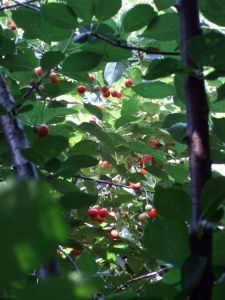The Camberwell Community Council meeting on 18 November included a discussion on green spaces.
It was very cheering to hear from so many ‘Friends of’: there were representatives from the Friends of Burgess Park, Camberwell Green, Green Dale, Lucas Gardens, Stanswood Gardens, Benhill Nature Reserve and others. These groups are organised by volunteers and work with the dedicated staff of the council’s Parks and Ecology departments, often juggling fundraising, project management and making sure that everyone can enjoy the spaces harmoniously, alongside taking practical care of plants and trees, playgrounds and wildlife.
Ecology Officer Jon Best gave a brief but impressive presentation on the diversity of wildlife in Southwark, including birds, bats and stag beetles, and some of the measures taken to protect them. In the case of stag beetles, for example, that means providing ‘hotels’ of wood that’s allowed to decay, providing a space for the grubs to spend their early years before they emerge in armoured splendour.

Eleanor Margolies asked a question about a green space that no longer exists – Camberwell Orchard. While welcoming the new Camberwell library, she noted that a significant number of trees and fruit bushes had been lost as a result of building on this site. When Camberwell Magistrates’ Court was built in 1970, it was on the site of allotments. An alternative site for 32 allotments was therefore provided (next to Lettsom Community Gardens). She asked whether the council had plans to – or would commit to – replace the food growing space that the orchard had provided.
It was deeply disappointing to hear Cllr Barrie Hargrove repeat the canard that Camberwell Orchard had been of no ecological or social value: ‘Some people call a mouldy plum tree an orchard; I don’t,’ he said.
An independent arboricultural assessment of the orchard commissioned by the council noted two fine silver maples, along with 28 mature fruit trees – fig, cherry, pear and plum – as well as blackcurrant and redcurrant bushes. A CAVAT assessment of the value of the trees gave the orchard a financial value in the region of £608,000.

In his response to the question, Cllr Mark Williams mentioned council plans for tree planting on Lomond Grove, an area to be added to the footprint of Camberwell Green, and the potential to reclaim some space behind Camberwell Magistrate’s Court from the highway, but he didn’t address the question of food growing. Cllr Hargrove was clearly piqued by the reminder of the lost orchard, saying ‘we shouldn’t look back’. But talking about urban food growing is not looking back: it is looking towards a sustainable future.
For example, Incredible Edible Todmorden is an urban gardening project which has transformed a town in Yorkshire – building community, public health and sustainability. Its membership requirements are simple: ‘If you eat you’re in.’
In Southwark, architects and local residents Katrin Bohm and Andre Viljoen have written about integrating urban agriculture into urban planning and its environmental, economic and social benefits.
Viljoen teaches architecture at the University of Brighton. In June 2015, at an inspiring event organised by Peckham Vision, 12 master of architecture students from the university showed their plans for how food growing might be integrated into a dense urban area, helping to make Southwark more resilient by providing its own food, making use of its food waste as compost, purifying its own water and so on. Their ideas were based on a period of intense research into the actual conditions of Peckham: where are there unused spaces between buildings? what do people here like to eat? who might be interested in fish-farming, growing herbs or cooking with local produce? They are bold ideas but thoroughly researched and achievable with investment and vision.
In contrast, asking the council to commit to replacing the food growing opportunities provided by Camberwell Orchard is not a huge request. Trees and bushes could be planted in small pockets and corridors around Camberwell.
A commitment to providing at least as many fruit trees and bushes as were lost at Camberwell would show that the councillors understand the importance of urban food growing.
Other residents at the meeting asked about:
- how to make sure that contractors don’t chop back shrubs when they are flowering or covered with berries essential to wildlife.
- how to make sure that trees planted by Southwark Council are looked after and survive to maturity. A resident described how trees planted by the council on the Elmington Estate had died in their first hot summer because they were not watered by contractors.
- how to make sure that volunteers’ work on parks and green spaces is protected by the council for the long term benefit of all.
Afterwards, Eleanor suggested one possible location for food growing to Councillor Hargrove. Low maintenance raspberries and currant bushes could be planted in raised beds on Daneville Road (behind Morrison’s in Camberwell). This street is open for pedestrians and cyclists but closed to cars. Some trees have been planted along the centre of the road – but it’s still dominated by tarmac.
What do you think? What are your suggestions for edible planting in South Camberwell?
Recent Comments